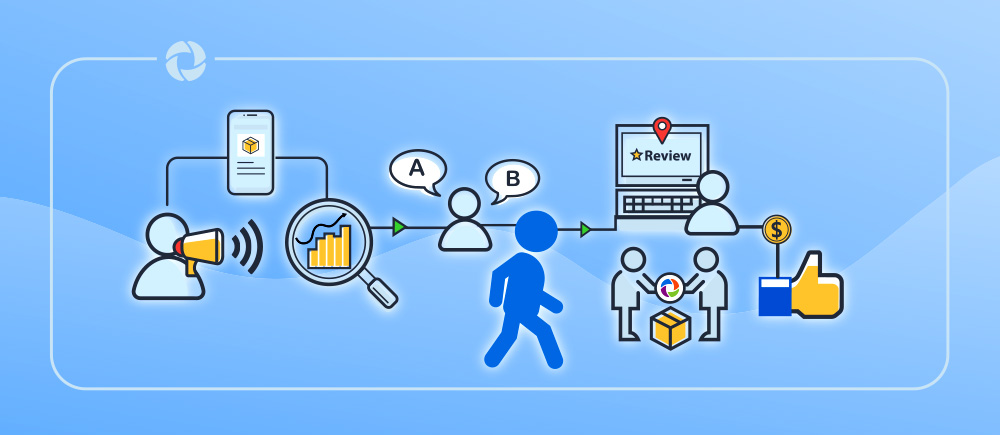In the dynamic landscape of Environmental, Health, and Safety (EHS), RSS frequently encounters organizations with outdated processes and systems, which impede compliance and operational efficiency. Many individuals we speak with recognize the need for a more modernized EHS approach using software solutions. However, they are already burdened with full-time responsibilities (or more) and don't feel they can invest the time needed to find the right technology.
These feelings are 100% valid as the road to purchasing a safety software platform can be long and arduous, with the stakes riding high on the final decision living up to your organizations needs and expectations. The good news is that the overall process is relatively standardized, meaning you don't have to figure it out alone!
This article is for those who have been tasked with researching an EHS software platform. There are many critical steps and decisions to consider throughout the process, so we created this step-by-step guide to help our potential clients and anyone else undergoing this process.
1. Recognize the need for change:
Ask yourself, is our process efficient? What gaps exist that are not addressed with the current process? Are there new regulations or reports you can’t easily comply with? As EHS regulations and practices evolve, so should your programs and processes. Push aside the initial daunting feeling and commit to improving. Embrace the fact that leaving behind paper processes and semi-automated or non-centralized legacy systems will expedite your goal. The improvement journey begins with acknowledging and prioritizing the need for change.
2. Commit to the process:
Embrace the journey of evaluating and purchasing EHS software. No one says it is simple, but it can be rewarding if you do the legwork. Dedication is crucial to selecting the right software provider successfully. Approach this process knowing that the end result is a better future for your organization's safety and compliance.
3. Form a focus group:
Engage subject matter experts, stakeholders, and decision-makers to create a cross-functional focus group. Involving individuals who will use the software daily and those who will fund the purchase ensures everyone understands the importance of addressing the need and confirms their commitment to the process. You want to avoid making decisions in isolation for many reasons: a lack of buy-in can lead to delayed implementation, low morale, poor adoption, and even personal reputational loss.
4. Identify & prioritize needs:
Evaluate your current situation by identifying what is working and what isn't. For most people we talk to, there are some obvious areas they know they should improve, such as automated MAQ reporting or streamlining their inspection process. Other priorities are often less obvious and require deeper examination to identify. It's essential to list all your needs and then prioritize problems based on urgency and impact. Understand that you cannot solve every problem and consider trade-offs. Asking critical questions about the issues you are trying to fix will bring clarity to those improvements you are willing to forgo if necessary.
5. Assess the cost of doing nothing:
The best question to ask in this stage is, what will happen if we don't change anything? The answer may be nothing in the short term, but you need to determine the consequences of maintaining the status quo beyond today and tomorrow and think about the medium, and long-term impacts. Consider the risks of increased injury or illness and the costs, such as productivity loss, lower morale, potential fines, and damaged reputation. This type of assessment can help assign urgency to the EHS challenges you face.
6. Visualize success:
Think about what success looks like. Imagine how your work environment will change upon reaching success. For example, this might mean you can pull a report in under a minute when an announced (or unannounced) auditor comes on-site. Visualizing, quantifying, and articulating what success means to your organization is essential. Be realistic about whether technology can help achieve those goals. As an organization specializing in tech, we feel it is important to acknowledge that technology can support your programs, but it can't fix everything.
7. Establish value & justify:
Effectively communicate and document how software will make your organization more successful to all parties involved. Craft a compelling business case highlighting the organizational value gained from acquiring software, tailoring the message to resonate with stakeholders at different levels. Address potential obstacles, emphasizing productivity and risk mitigation benefits as part of your support.
8. Learn the purchasing process:
This step is the one that varies the most across organizations. The primary takeaway here is to learn your organization's purchasing process and ensure there is sufficient funding for EHS software.
If you have a purchasing department, collaborate with them to understand the parties involved. Determine the optimal timing for purchasing the software by considering budget cycles and organizational priorities. Get familiar with company rules, such as RFPs for purchasing, IT security standards, and legal contracts or requirements. If your organization requires a budget justification as part of the procurement process, you can use what you developed in step seven to help draft one, and you can review our article on Writing a Budget Justification in Six Easy Steps for additional tips and examples.
9. Explore & evaluate:
Explore EHS software vendors. You can find vendors in many ways, through internet searches, professional organizations, and referrals from industry peers to name a few. Start broad and narrow down your choices to the top vendors who appear to meet your critical needs and conduct thorough evaluations. Compare your “must-have” and “nice-to-have” features with each vendor offering. The top solutions should align with your greatest business needs. Critical things that are often overlooked include scalability, ease-of-use, mobile capabilities, security practices, continuous support, and expertise.
Finally, assemble a short list of vendors to contact for a conversation and demonstrations. Be sure to bring the focus group to the demos and ask questions of the vendor. Remember, you are interviewing them to see if they are a good fit as much as they are doing the same with you. Client-vendor compatibility is one of the most critical components to long-term success. Ensure the vendor is listening to your critical needs and truly understands what you are trying to achieve. Don't be afraid to ask the hard questions.
10. Identify the best:
If the vendor offers a hands-on trial or “sandbox”, make sure your key stakeholders get access and thoroughly test the system. Demos are intended to show the best path, but only once you are in the software do you truly understand how and if it can work for you. At this stage in your process, you should have a clear understanding of which vendor best meets all your needs.
11. Request pricing:
Cost will always play a significant role in your decision, but don't select software on price alone. Consider the selected EHS software's unique features and thoroughly understand the cost savings and non-financial value it will bring. Consider the cost savings from reduced risks, resulting in fewer injuries and fines. Also, consider the increased productivity and reputational success gained if you choose software that reduces administrative work for your employees.
If your preferred vendor's price tag seems too high, don't hesitate to ask if they can hop on a call and talk about options. By providing more information to the vendor about your users and usage, you may find that they offer tiered or scaled pricing to fit your budget. It doesn't hurt to ask, and if you don't, you may end up settling for a solution that was second best.
12. Sign purchase complete:
Finalize the purchase, ensuring all stakeholders are on board. Celebrate the buyer's journey completion and prepare for the successful implementation of EHS software to enhance organizational safety and compliance.
Authors

Diana Cox
Associate Director of Business Development and Strategy
Risk and Safety Solutions

Holly Nguyen
Lead Communications Analyst
Risk and Safety Solutions

